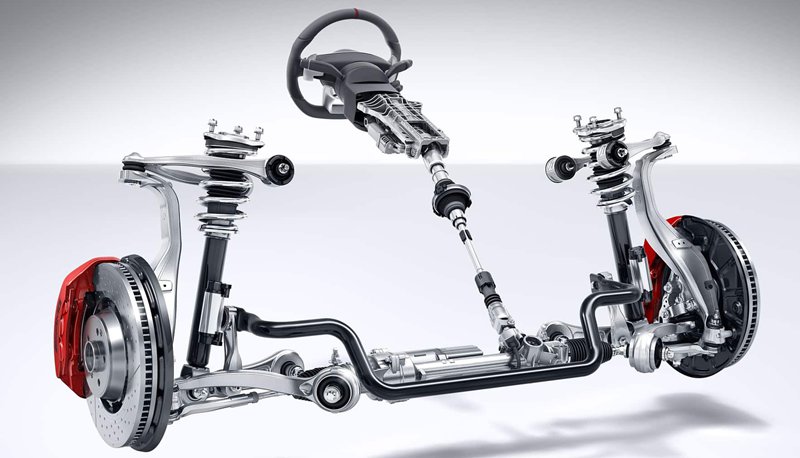
Your car’s suspension does more than just make rides comfortable—it’s a critical safety system. The suspension absorbs bumps, maintains tire contact with the road, and provides stability while turning, accelerating, or braking. Without a properly functioning suspension, even the most powerful engine or advanced brakes won’t keep your vehicle safe.
This guide covers everything you need to know about car suspension components and their functions, helping you understand how they work together to create a smooth, controlled, and reliable driving experience.
A suspension system is a network of springs, shocks, struts, control arms, and linkages. Together, these parts:
●
Support the vehicle’s weight.
●
Absorb shocks from road imperfections.
●
Ensure tires maintain traction.
●
Provide stability during maneuvers.
Let’s break down each major component and its role.
●
Most common in modern cars.
●
Provide flexibility and consistent comfort.
●
Found on all four wheels in many vehicles.
●
Used in trucks and older vehicles.
●
Strong, durable, and capable of carrying heavy loads.
●
Simple design, but less comfortable than coils.
●
Use twisting resistance instead of compression.
●
Found in off-road vehicles and some trucks.
●
Adjustable for ride height changes.
While springs absorb energy, shocks control the rebound. Without them, your car would keep bouncing after hitting bumps.
●
Use oil to dampen spring movement.
●
Common in older and budget-friendly vehicles.
●
Contain pressurized nitrogen gas.
●
Reduce foaming in hydraulic fluid, offering better stability.
●
Provide more responsive handling.
●
Excessive bouncing.
●
Nose-diving during braking.
●
Uneven tire wear.
Struts combine the roles of shocks and structural support. They’re essential in modern suspension systems.
●
Shocks:
Only control spring movement.
●
Struts:
Provide damping and structural support for steering and alignment.
●
Compact design.
●
Cost-effective for modern vehicles.
●
Improve ride quality and cornering stability.
Control arms connect the wheel assembly to the vehicle’s frame, allowing wheels to move up and down.
●
Many vehicles use both upper and lower arms.
●
Keep wheels aligned during motion.
●
Ball joints allow smooth wheel movement.
●
Bushings absorb vibration and reduce noise.
Sway bars connect opposite wheels, minimizing body roll during turns. Without them, your car would lean excessively, reducing control and safety.
These connect the steering wheel to the wheels, allowing precise directional control. Worn tie rods cause loose steering and uneven tire wear.
Wheel bearings reduce friction, enabling wheels to spin smoothly. Damaged bearings cause humming noises and can lead to wheel failure if ignored.
Q1: How often should suspension parts be replaced?
A: Most shocks and struts last between 50,000–100,000 miles, depending on driving conditions.
Q2: Can I drive with a bad suspension?
A: Technically yes, but it’s unsafe. Poor suspension increases stopping distance and reduces control.
Q3: What’s the cost of suspension repairs?
A: Replacing shocks or struts can cost $400–$900, while full suspension overhauls may exceed $2,000.
Q4: Do suspension upgrades improve performance?
A: Yes, performance shocks, struts, or sway bars can significantly improve handling and stability.
Q5: How do I know if my car has independent suspension?
A: Most modern passenger vehicles do. Check your owner’s manual or look under the vehicle.
Your car’s suspension system is more than just springs and shocks—it’s a complex network of components working together to ensure comfort, safety, and stability. By understanding the role of each part, you’ll be better prepared to maintain your vehicle, spot problems early, and make informed repair decisions.
Whether you’re commuting daily or heading off-road, a well-maintained suspension keeps your ride smooth, your handling precise, and your passengers safe.